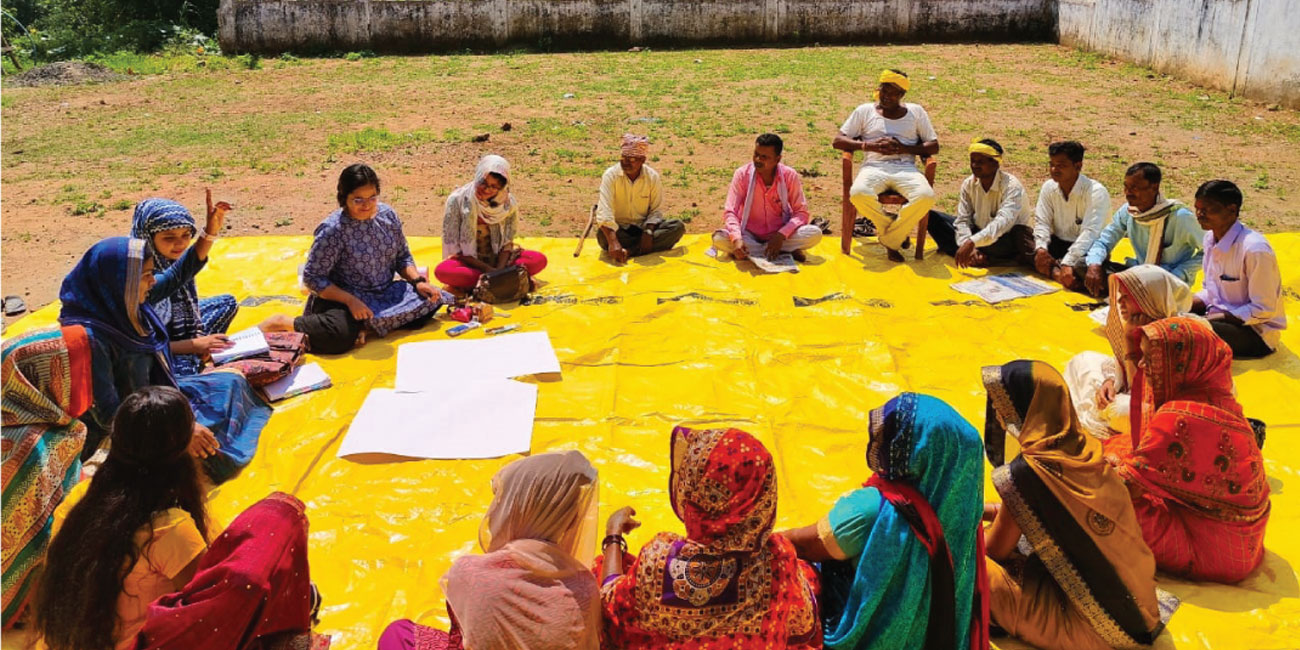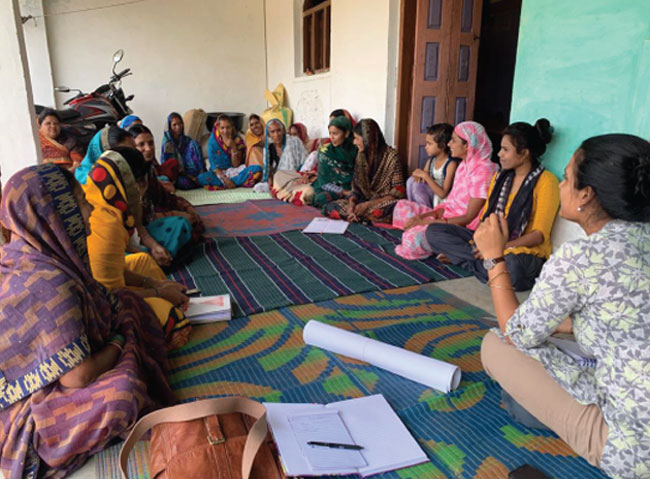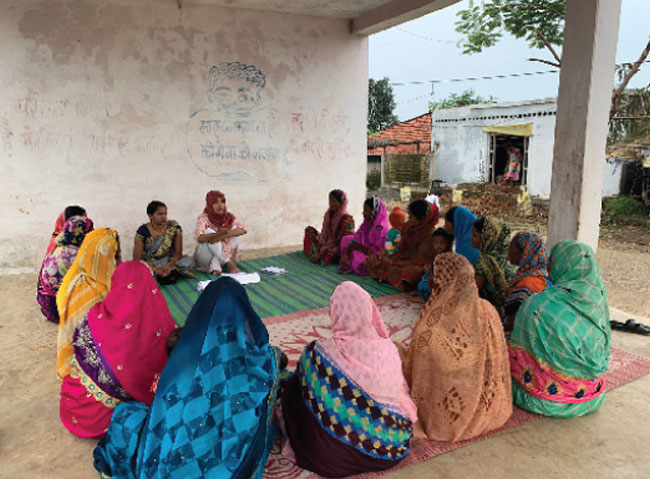

At The Antara Foundation, the community is placed at the heart of the health system strengthening process. We strongly believe that the best solutions to complex health problems come from those closest to, and most affected by the issues. Listening to and learning from our village communities is therefore a crucial element of our program design.

While building institutional capacities was the first step to intervene, to actually sustain a system independent of any external support would be to make the community aware of the health services due to them and then build an ecosystem which can continually demand their rights from the government. Starting from the village level, we have identified cadres at every stage – Self Help Groups (SHGs) at village level, village organisations, cluster level federations and the block level.
Our everyday community interactions and experiences have given us an understanding of the importance of including the community (demand side) in the integrated model. We see an urgent need to address the multiple and complex barriers at the ground level in accessing healthcare services, that range from local faith healers, to the rampant practice of traditional beliefs that often lead to mortality.


To make this model sustainable and scalable, we work directly with government-appointed groups, i.e., SHGs under the NRLM (National Rural Livelihood Mission) project initiated by the Ministry of Rural Development, India VOs (Village Organisations), a federation of three or more SHGs, are our focal points of the intervention. To better network and get the most information from these organisations, we chose our own CRPs (Community Resource Persons) for each village from the SHGs. These CRPs collaborate with the AAA and the Tadarth Samiti at the village level, and Jan Arogya Samiti (JAS) at the sub-health centre level to discuss health-related topics and issues. CRPs serve as a bridge between the community and us, disseminating all the issues that arise during the meetings. A supervisory cadre, CRP supervisor, has also been formed to monitor and support the CRPs.
This integrated model is essential to bring a change at the grassroots and achieve our goal of effective public health delivery at scale.